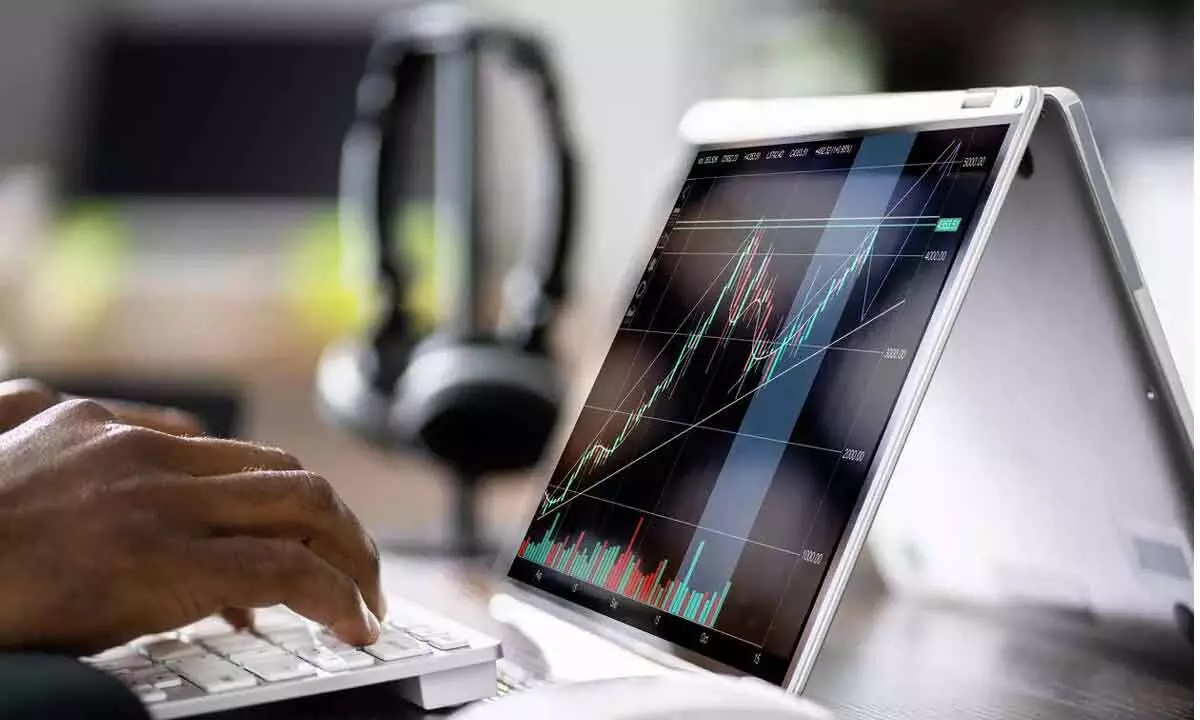Live
- BJP urges EC to stop Cong’s ‘Guarantee Cards’ campaign aimed to 'induce voters'
- Congress cheated Madigas: Dr. RS Praveen Kumar
- CBDT signs record 125 pacts to ease tax payments by big multinational firms
- Kamal Nath accuses BJP of ‘threatening’ Congress leaders in Chhindwara
- Odisha: BJP, BJD allege violation of MCC
- PM Modi lands in Guwahati to kickstart poll campaign
- ‘100 day action plan’ is PM Modi’s signature style for setting goals and meeting targets
- BJP will change the Constitution if they come to power again, says Priyanka Gandhi
- BJP-led NDA to cross 390-mark in Lok Sabha polls, predicts India TV-CNX survey
- Haier launches new TV series in four sizes in India
Just In
Multi asset global PMS best bet for foreign education needs


Investors could use the LRS route i.e., Liberalized Remittance Scheme which allows individuals to invest in assets abroad up to $250K per annum
Risk reduction is achieved by exposing the portfolio with a wide variety of instruments and is called diversification. Most times, diversification is achieved by employing multiple asset classes with limited correlation. The less correlated they are, the better is the diversification. This allows the portfolio to perform in a consistent way than the undiversified or under-diversified. This is because of the possibility of one asset class to outperform when the other underperforms. It also helps bring down the risk as the factors that influence a particular asset class varies from the other.
The other way of diversification is to expose the same asset class within multiple sub-classes or across various geographies. For instance, equity could be further classified into large cap, mid cap and small cap, with each carrying their own risk and return profiles. Similarly, when equities are considered across multiple geographies then the risk to return profile changes by a lot. Domestic investors would additionally benefit from depreciating rupee which adds to their returns
For instance, comparing the equity benchmarks in 2021 have different returns with Indian NIFTY50 generating over 24 per cent while US S&P500 delivering close to 29 per cent even as China's Hangseng (Hongkong index) has given a negative 3.4 per cent return. In 2013, the US index has delivered close to 30 per cent return while that of Hangseng had given close to 23 per cent even as Nifty 50 has struggled with 6.7 per cent. Then Taiwan weighted index has delivered close to 24 per cent and 12 per cent respectively for '21 and '13
For starters, there're mutual funds (MF) which invest in global markets. Options are available in both active and passive management.
DSP Global Allocation fund is a blend of equity and debt where a little over a third of the fund is S&P 500 composite, about a quarter is invested in FTSE World (ex-US), a similar exposure to US Treasury Current 5yr and the rest in FTSE Non-USD World Govt Bond index.
Kotak International REIT FoF attempts to explore another asset class, Real Estate Investment Trust (REIT). This is a feeder fund to another international REIT fund with portfolio restricted to Asia.
Investors, however, could use the LRS route i.e., Liberalized Remittance Scheme which allows individuals to invest in assets abroad up to $250K per annum. There're platforms including ICICI direct to invest directly in the stocks, ETFs, etc.
Phillip Capital has introduced a global PMS which invests in a portfolio of equity, debt, REITs, commodities and currencies. They're registered in GIFT city, which is India's first smart city and international Financial Services Center (IFSC). GIFT City, which falls under the IFSCA (fund management) regulations, 2022, is a unified authority for the development and regulation of financial products/services and institutions in the IFSC in India. This does the job of RBI, SEBI, PFRDA and IRDAI combined in the IFSC.
This portfolio management service (PMS) offering helps investors to sift through more than 45 exchanges covering over 10K ETFs. The fund claims to be long-term focused, with research-driven approach and seamless execution. They could even have the flexibility to trade/invest in non-traditional assets like cryptos and carbon credits. This multi-asset portfolio aims to capture the trends of today and ideas of tomorrow.
This investment is a gateway for NRIs who're trying to diversify their rupee assets. Theycould also enjoy tax benefits depending upon their jurisdiction. Investors with long-term horizon, higher risk appetite and international needs (like foreign education) could explore this option. A defined or ideal exposure can't be arrived as this is more to do with the requirement and risk appetite of the investor.
(The author is a co-founder of "Wealocity", a wealth management firm and could be reached at knk@wealocity.com)

© 2024 Hyderabad Media House Limited/The Hans India. All rights reserved. Powered by hocalwire.com






